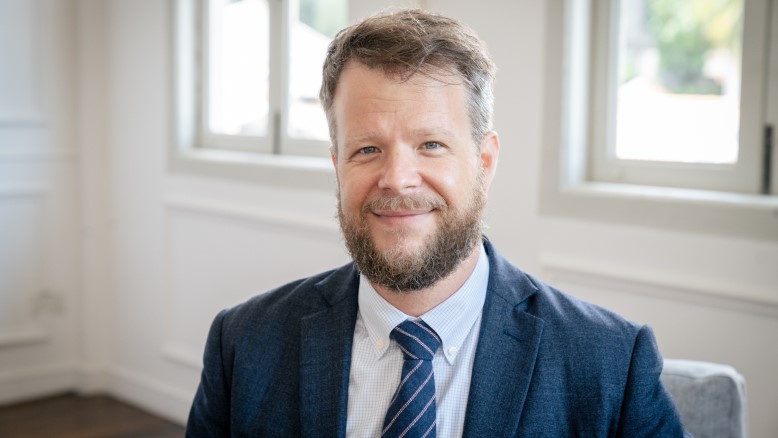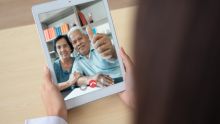
Covid-19 has touched multiple aspects of daily living and interactions. How can design research, design thinking, and user design help us navigate the many unprecedented challenges we’re faced with in this new normal? Co-organised by the Singapore Chinese Cultural Centre and the SMU Institute of Innovation & Entrepreneurship, The Singapore Creator Awards 2021 webinar — Decoding User Designs in the New Normal, explored these issues, and more, earlier this year.
SMU Associate Professor of Communication Management (Practice) Tamas Makany shared his thoughts on the shifting role of design in these current, trying times; and how design professionals can level up to meet new challenges.
Elevating shared experiences
At the time of writing, over 160 million cases of Covid-19 have been reported worldwide, with few countries left untouched by the pandemic. The devastating effects of the virus have disrupted every stratum of society around the entire globe. While the unprecedented scale of the pandemic is devastating, it has also triggered a unique wave of shared experiences that transcends culture, nationality, social-economic status, and age.
“Events such as the virus and the pandemic are creating empathy and connections across borders, across communities, across places,” says Assoc Prof Makany. “But each community has its own needs to digest, localise and humanise information based on their own unique needs.”

This common — albeit harrowing — experience has shed light on the importance of human-centred design thinking, now more than ever before. The fact is, all good design is intrinsically human-centric, and involves careful consideration of the entire product or service experience, from packaging to marketing and retail touchpoints.
“This is very fundamental, very profound, I think because it highlights that we need to look beyond the experiences that we designers used to have,” explains Assoc Prof Makany.
“While we continue to focus on the individual user needs, we must broaden our scope to consider larger groups of people and humanity at scale.”
Amplifying empathy
However, reaching a new level of human-centred design requires us to strip away biases and get to the core of what users need. Moreover, this could only be achieved by, as Assoc Prof Makany states, the use of “extreme empathy”. He provides the example of how children naturally empathising and creating authentic encounters with one another, as an analogy to how “designers and researchers and the design community can seek out those genuine encounters and use that extreme empathy that's out there.”
But designing with empathy is often easier said than done and may require actions that stimulate a mindset shift. For example, Assoc Prof Makany — who used to be a Senior Design Researcher at Netflix in California — recalls how designer colleagues at the streaming company regularly deliver presentations on A/B test results and statistical power calculations. While the topic goes beyond their fields of expertise, the objective of the exercise is for internal stakeholders to swap roles to create empathy within the organisation.
Explains Assoc Prof Makany: “Let's see if we understood each other. Let's see if we have the common language that we need internally to be able to create better products, better experiences.”
Such exercises need not be restricted to internal stakeholders. Assoc Prof Makany, who was also a Design Research Manager at Microsoft’s telecommunications app Skype recalls a study he ran that involved co-design. This participatory approach involves various stakeholders – users, product owners, researchers, designers – as collaborators in the design process. In this particular study, the group collaboratively built their prototypes to reimagine the Skype mobile interface on a large magnetic whiteboard, using magnetic cutout pieces of icons, buttons, and other design assets.
“The co-design experience not only engages and allows for a better understanding of what the user needs are, but also creates this extreme level of empathy that we need to understand not only our users’ perspective, but also the perspectives of the designers, the product owners, and the engineers,” he explains. “We did it together through a fun and collaborative exercise, and we democratised the design process.”
Even in a time of social distancing and remote working, this process can be replicated with the help of remote collaboration tools, “where you can have a conversation between multiple people who have different boards with stickies, virtually, and allow for a common building of these experiences.”
Designers as frontline workers
Good communication often revolves around the ability to make information accessible. During Covid-19, powerful and effective communication strategies are critical in delivering information and help shape how a community receives, perceives, and responds to public messages.
As Assoc Prof Makany relates, there exists plenty of information about the importance of washing our hands and how frequent and thorough hand washing is essential in slowing the spread of Covid-19. “What's amazing is how design can help you visualise hard-to-understand medical data, such as the areas of the hands that can be most susceptible to viruses and bacteria,” explains Assoc Prof Makany. “Design researchers in the UK demonstrated, for example, that with the right image, more people will remember to wash frequently missed areas like our thumbs and our fingernails.”
As such, he broaches the notion of designers as frontline workers in the pandemic — because they can rapidly convey messages fundamentally needed during the crisis and “empower communities around the world to stay safe during Covid-19”.
Thriving on ambiguity
A prolonged crisis like Covid-19 presents a multitude of challenges across various industries. Many of these shared struggles are fuelled by uncertainty, as there exists no frame of reference upon which we may devise appropriate strategies and solutions. However, Assoc Prof Makany states that this is not a novel situation. Designers have always been tasked with finding solutions to unexpected problems and “thriving on ambiguity for a long time.”
The process of approaching unchartered design territory, says Assoc Prof Makany, can be compared with children at play: Kids intuitively ask questions about why things work the way they do and observe the actions of one another, thereby learning from the perspectives of their peers. His older child, for example, would constantly pose questions and reflect “the fundamental archetype of a researcher who wants to understand things.” In comparison, his younger child is a “builder” who enjoys putting together models of the world to make sense of the environment around him — fulfilling the archetype of a designer.
“Childhood is all about dealing with ambiguity and uncertainty,” says Assoc Prof Makany. “This is achieved by ‘sense making’ through data collection, through experimentation, through collaboration. It is how they seek answers to the world.”
The analogy demonstrates how researchers and designers can work together to solve great problems as they adapt to a new reality “by continuing to play together, to learn from each other what it means to be together in this new world.”
Design in a new reality
For over a year now, social distancing and remote working practices have affected traditional office dwellers worldwide. As Assoc Prof Makany recalls from his corporate experience, a typical design process used to involve the designer and researcher sitting together in an office to spontaneously bounce ideas off each other and gain new inspiration.
While collaborative physical spaces — especially those of cushy startup campuses — are often conducive for discussions and brainstorming sessions, Assoc Prof Makany encourages design professionals to explore other tools for collaboration, even if they are suffering from “Zoom fatigue.” While it may be tempting to ignore collaboration, unprecedented circumstances call for drastic mindset shifts.
For example, if relentless virtual meetings are stunting one’s creativity, he suggests exploring alternative virtual meeting spaces like Gather.town, a video-calling space that allows multiple participants to hold separate conversations in virtual communities that emulate physical meeting spaces.
“This new reality should not be an inhibition for us to do things right now,” suggests Assoc Prof Makany. “Ask yourself, what is it that you can do right now for your community? What is it that you can do right now for your client? If you're a student, and I know many of you are, then what is it that you can do right now for your fellow project group members?”
In this new norm, we need to seek out meaningful connections, and we need to connect with each other.”


